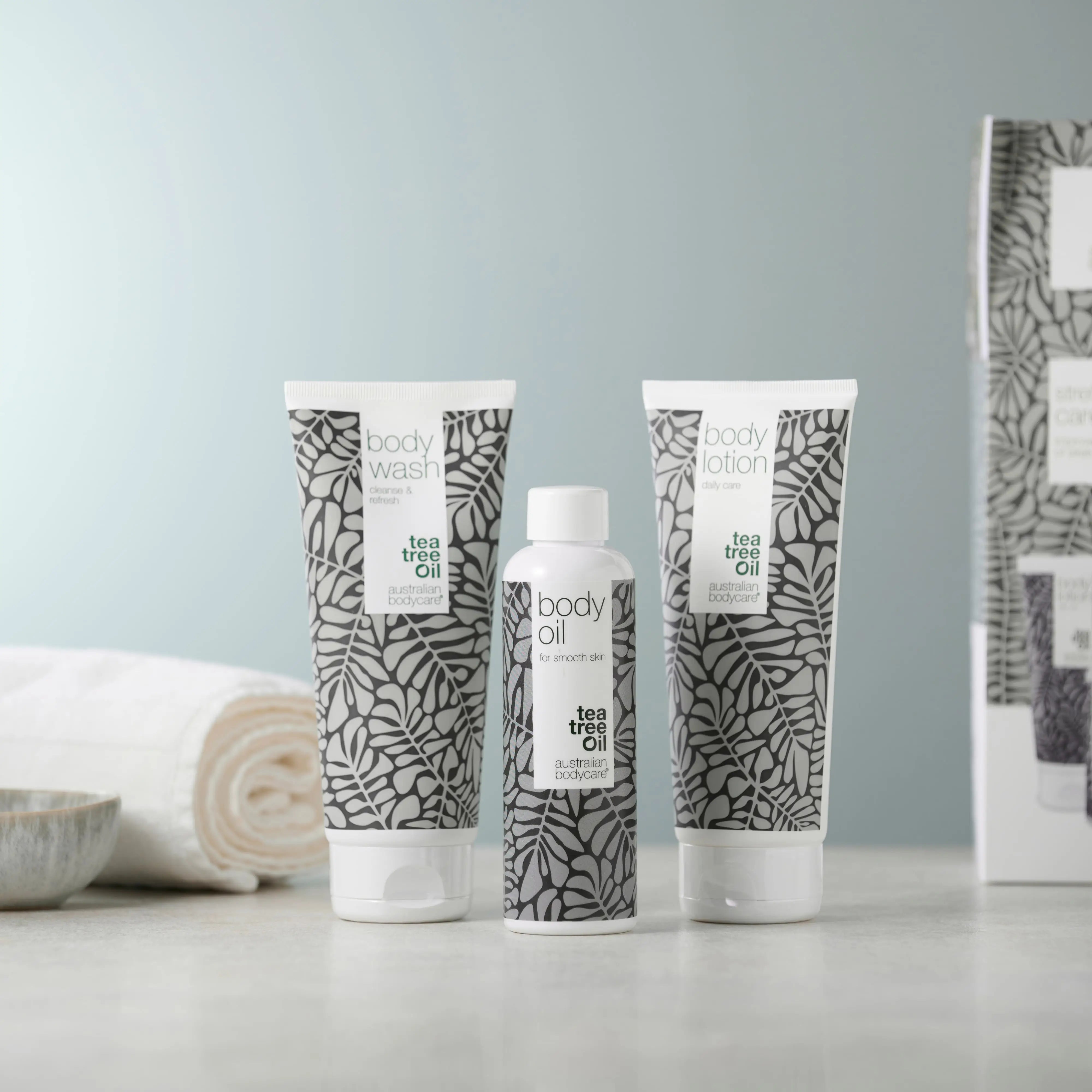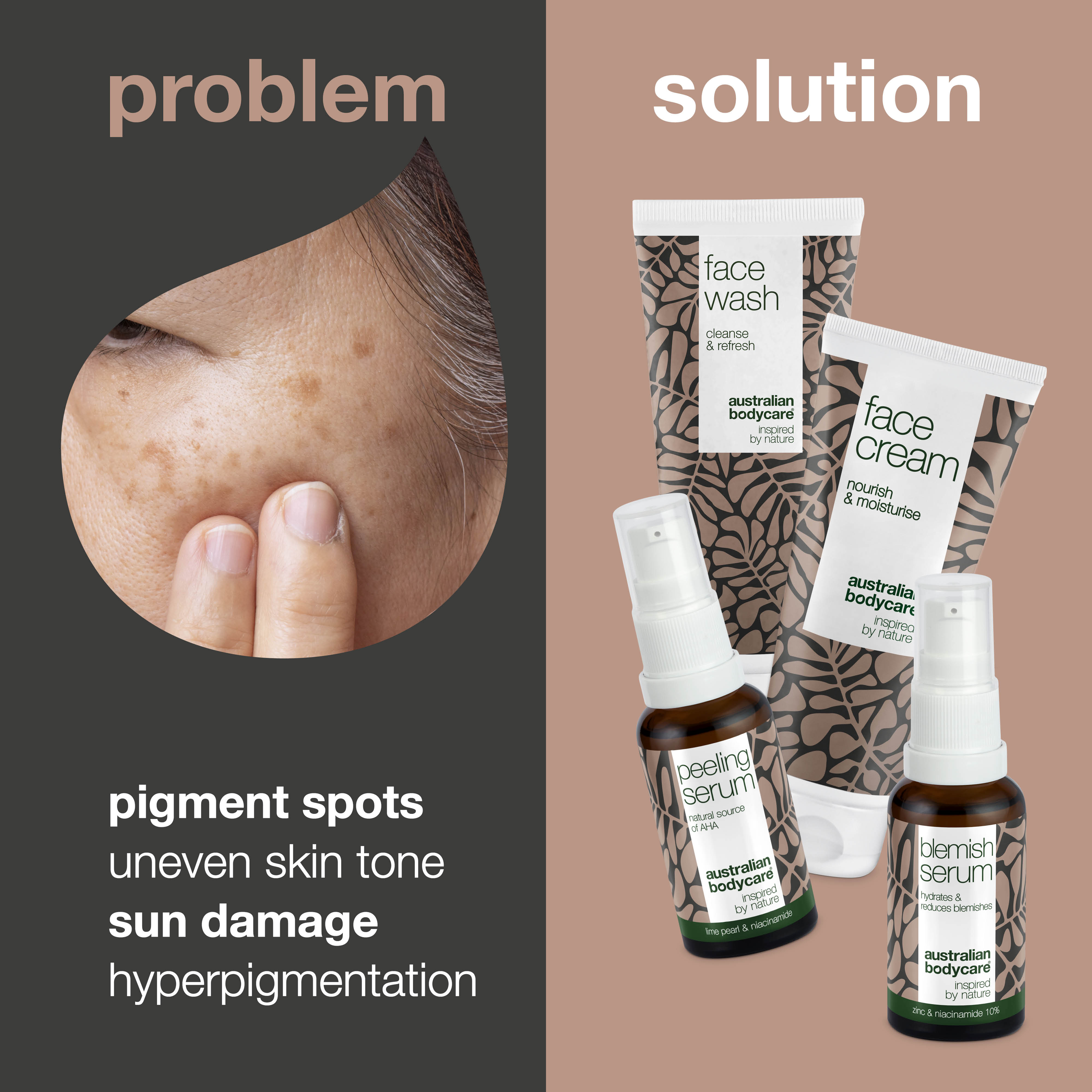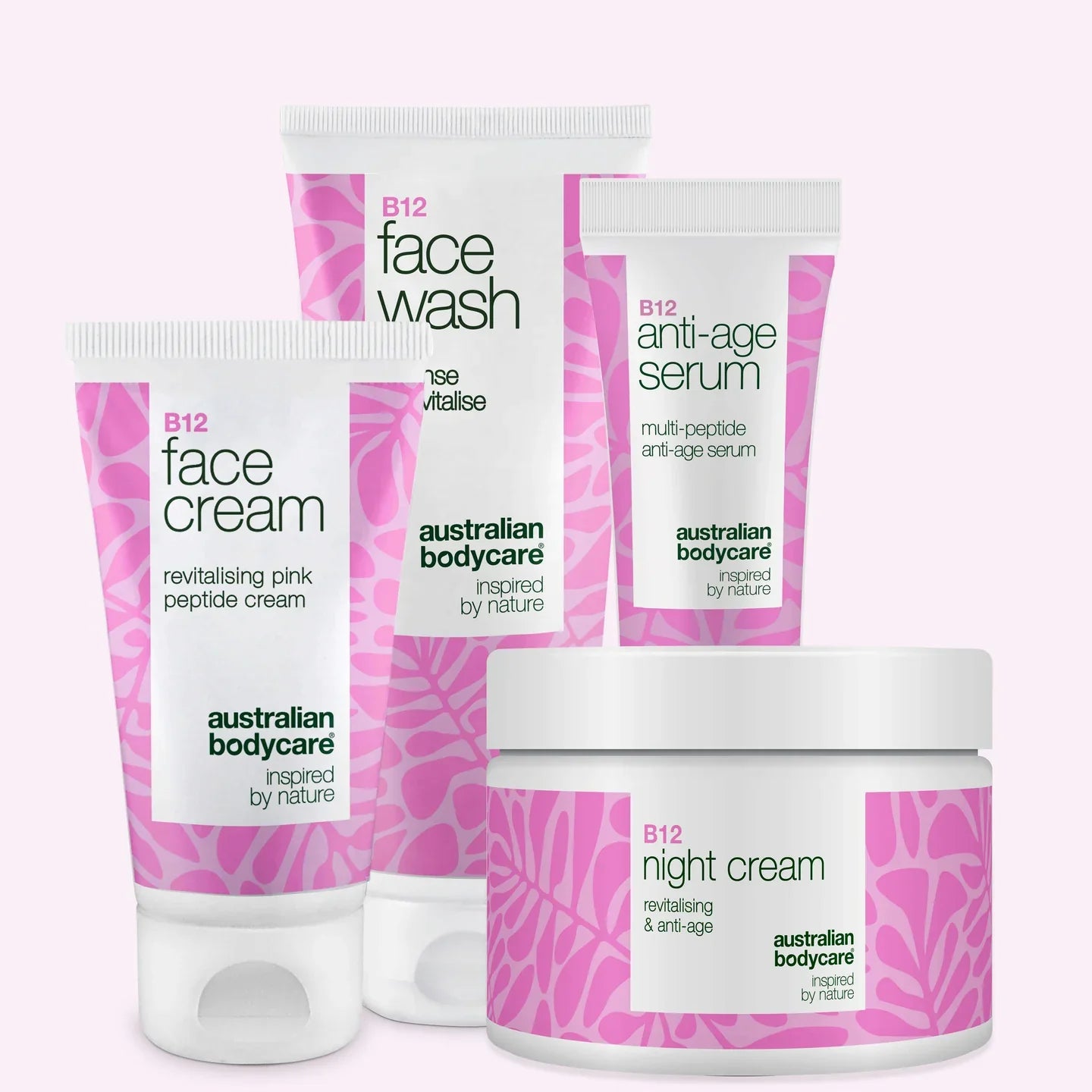Dark spots on the skin – How to reduce them
Dark spots on the skin and uneven skin tone can make you look older than you really are. But why do dark spots appear on your skin, what to look out for and how to minimise their appearance?
Find out in this article.
Table of contents
What are dark spots?
Dark spots, brown spots, dark marks, pigment spots, age spots. There are many names for them. The dark demarcations and brown spots on the skin are all known under the technical term hyperpigmentation.
Brown spots and hyperpigmentation differ from freckles in that they do not disappear with the end of summer. Freckles often appear on the nose and cheeks when the skin is exposed to sunlight, but they fade over the winter.
Brown spots, on the other hand, do not. They remain on the skin even when the sun gives way to the darkness of winter. If your brown spots are freckles, they will therefore disappear during the winter months, but if they are moles, pigmentation changes or similar, they will remain in the skin.
Why do dark spots appear on your skin?
Dark spots, moles and general hyperpigmentation of the skin means that there has been an overproduction of melanin.
Melanin is a special substance that gives both hair and skin colour. Melanin absorbs the colour from the sun and is the body's own natural protection against the sun's harmful UV rays.
Sun exposure
However, it is this same sun exposure that is the main cause of dark spots on your skin.
If you stay in the sun without sun protection, or if you stay in the sun for too long, melanin production can become irregular. This means that the colour will accumulate and form brown patches on the skin.
Hormononal changes
Another reason why you may have dark patches on your skin can be hormonal.
For example, it could be the hormonal changes your body goes through if you are on the contraceptive pill. Or it could be pregnancy, where the body's hormones are really shaken up, which shows up as brown pigment spots on the skin.
PIH - post-inflammatory hyperpigmentation
Your dark spots can also occur after damage to the skin. This is called post-inflammatory hyperpigmentation. This condition causes localised darkening of the skin because the skin has been damaged.
This can be after acne, burns, blisters, wounds and deep cuts.
In both post-inflammatory hyperpigmentation and hormonal brown spots, it is important to protect the skin well from the sun's rays. UV exposure can intensify the appearance of dark spots.
How to prevent dark spots
The best treatment for dark spots on the skin is always prevention. But what is the best way to prevent hyperpigmentation?
The most important prevention is sun protection. This includes sun hats, sunglasses and sun cream. Always seek shade during the hours from 12-15, when the sun is at its strongest - and protect your skin with loose-fitting clothes.
The face and hands are often the most exposed to the sun's rays, so it's always important to use a broad-spectrum sun cream that protects against both UVB and UVA rays.
Use a high SPF sun cream and always apply it about 20 minutes before exposure to the sun. Apply sun cream about every two hours or more if you sweat a lot.
How can you remove and treat dark spots on the skin?
There are several different methods to remove or minimise dark spots. Some are more invasive than others, but they all help you achieve a more even skin tone.
You can learn more about the different methods here.
Good skin care with cream or oil for dark spots
A mild and gentle way to treat your dark spots on your skin is with the help of a good and nourishing skincare regime.
With Australian Bodycare's pigmentation pack, you get 4 products that reduce the visibility of brown spots. They won't remove the spots completely, but your skin tone will improve significantly with regular use.
The effective ingredients help to even out and improve your skin tone, while nourishing and moisturising your skin thanks to Tea Tree Oil, natural AHA exfoliation and Niacinamide.
This is how you use the products:
1. If you wear make-up, remove it first. Then cleanse your skin with the face wash. Massage into damp skin, not forgetting the neck and upper chest. Rinse thoroughly and pat dry.
2. Apply a few drops of Niacinamide Serum to clean facial skin, neck and upper chest and massage in. The serum penetrates the skin quickly and works actively in the deeper layers of the skin.
3. Protect and moisturise the skin with face cream. Face cream works as both a day cream and a night cream. The cream is gentle to use, so a small amount goes a long way.
You should use the products twice a day for best results. Please note that it is normal for the skin to cleanse in the first few weeks, and you may therefore risk outbreaks of e.g. pimples in the first few weeks after you have switched products. This will stabilise and improve after a month of consistent use of the products.
You should use both day cream and night cream. The cream is long-lasting, so a small amount goes a long way. For best results, apply the products twice a day. Please note that it is normal for the skin to cleanse itself in the first few weeks, and you may therefore risk outbreaks of e.g. pimples in the first few weeks after you have switched products. This will stabilise and improve after a month of consistent use of the products.
Use the Peeling Serum 1-3 evenings a week like this:
After facial cleansing, pat your skin dry. Now apply a few drops of Peeling Serum to your face - and possibly to your neck and chest if you also have pigmentation changes there.
Peeling Serum should not be washed off, but left on the skin. Leave on for 30 minutes, then apply a few drops of Niacinamide Serum. Massage in and finish with a protective layer of face cream.
You should only use the Peeling Serum a few times a week. For some people, once a week is enough, while others benefit from using it 3 times a week. Experiment and find the frequency that works best for you and your skin.
When you have dark spots on your skin and want a more uniform and even skin tone, you need to be patient.
Your skin won't change overnight, but with diligence and patience you can achieve great results. It can take 12-20 weeks for the pigment oil to leave visible results on your skin.
Laser - IPL laser for a more even skin tone
Laser is another option you can use if you want a more even skin tone. It's a more expensive treatment than creams, but can be effective if you have many deep-seated brown spots on your skin.
IPL stands for Intense Pulsed Light and is a light pulse treatment that penetrates the skin and removes brown spots, pigmentation, redness and burst blood vessels to give you a more even skin tone.
The laser concentrates light pulses very precisely to the treated areas and "bursts" the colour, leaving you with a beautiful and even complexion.
Cryosurgery
Light freezing with liquid nitrogen - also known as cryosurgery - can treat your brown spots and blemishes in the skin.
The extremely low temperatures form ice crystals inside the skin tissue in the treated area, tearing apart the 'abnormal' cells. This causes the skin to peel off and re-form.
Bleaching cream for minimising dark spots
In some cases, a bleaching cream can be an effective way to reduce the visibility of brown spots and blemishes. However, you should always be careful when using bleaching cream, as it is a powerful treatment for the skin.
You apply the cream in a very thin layer on the brown areas, preferably once or twice a day. If your skin starts to show signs of redness, itching or irritation, it's important to let it rest for a few days. Then you can start using the cream again at longer intervals.
Use the bleaching cream only on the dark spots and not on the surrounding skin. It may be a good idea to use a cotton swab or similar to precisely target the dark areas of the skin. Do not apply any other cream on top of the bleaching cream and be careful not to touch the eyes or mucous membranes.
When should you talk to your doctor?
Dark spots are in the vast majority of cases innocent and rarely dangerous. Most often they are a cosmetic problem.
However, you should be aware if the spots become itchy, change colour and size, or otherwise change in appearance. In these cases, you should always consult your doctor for a professional assessment of the spots and, for example, to rule out melanoma.





